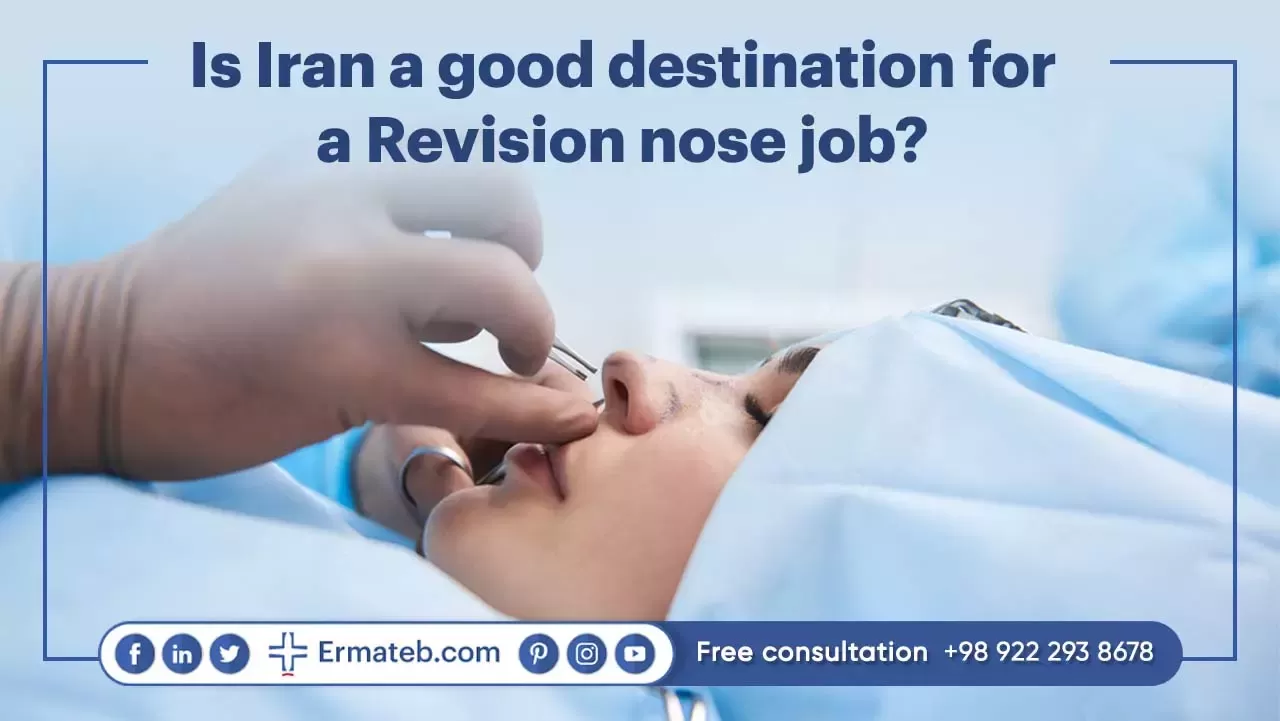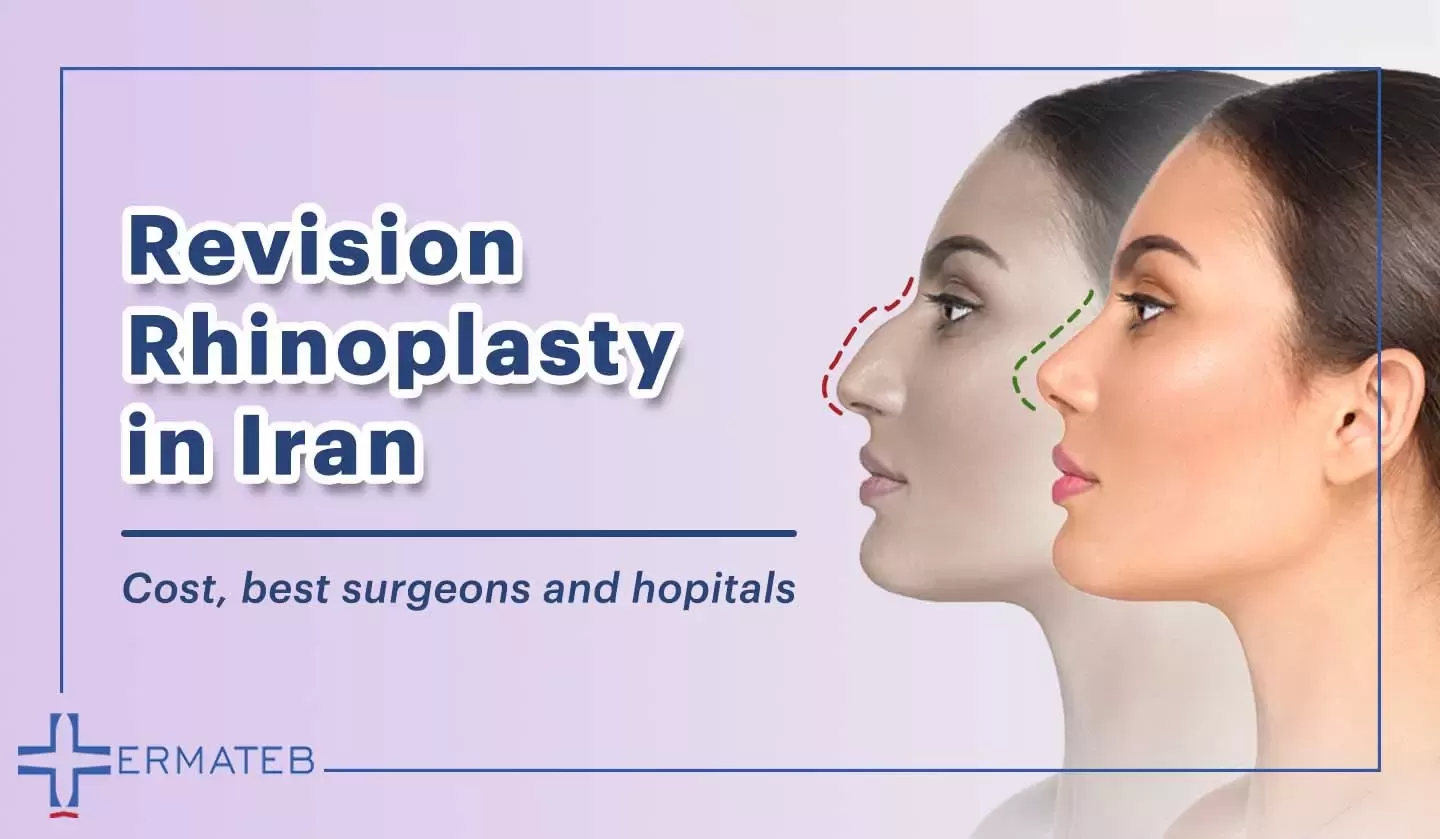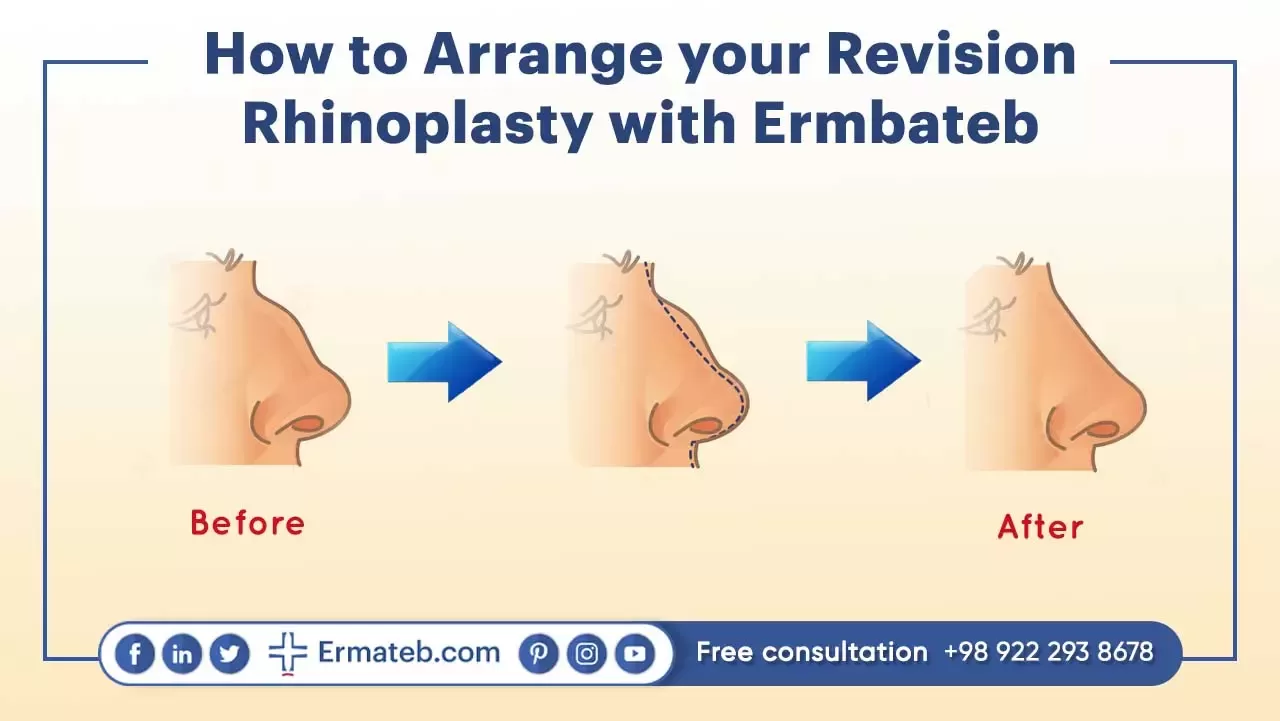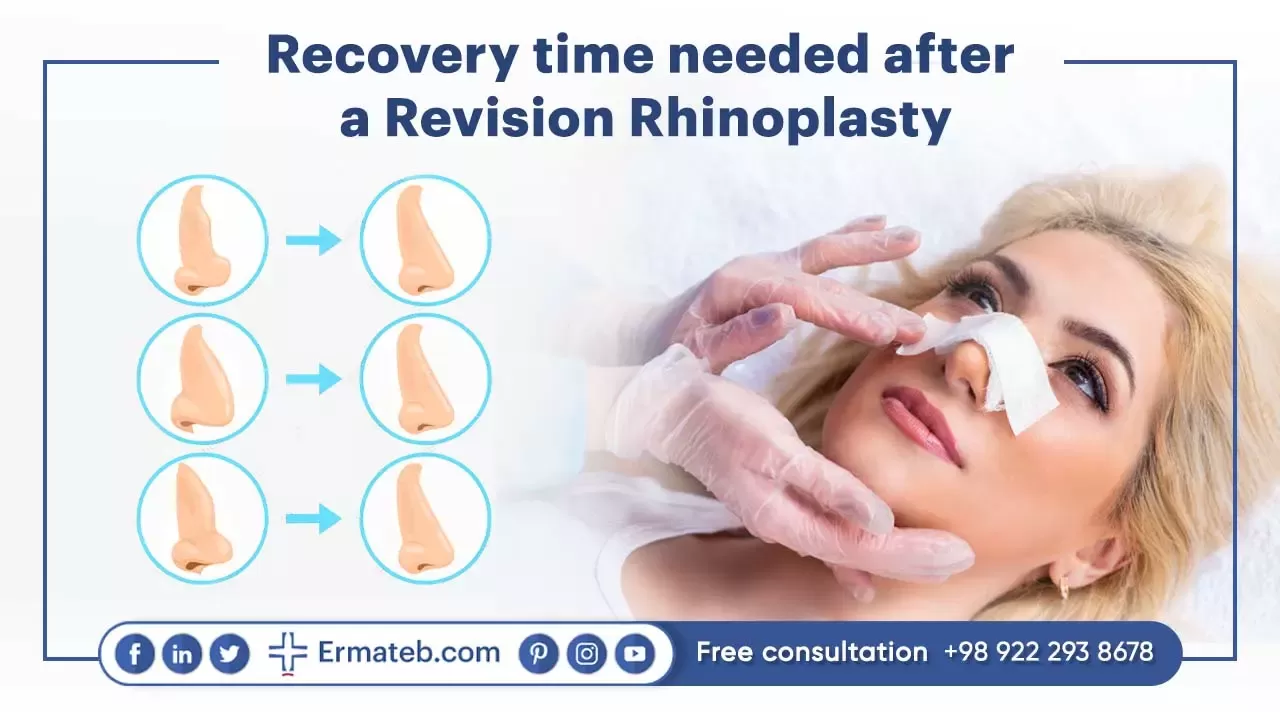How Much Does a Revision Rhinoplasty Cost in Iran?
As you may know, the revision nose job is surely more expensive than the primary rhinoplasty because it requires a high degree of delicacy and effort during the operation. Also, the doctor must administer more complex medical techniques to fix the errors of the previous surgery.
A primary rhinoplasty usually costs around $7,500, and a second nose job would be between $10,000 and $15,000.
These prices sound incredibly high, but the good news is that the cost of revision rhinoplasty in Iran is about $1,950. It can rise at most to $4,500 depending on the patient's nose condition and relevant medical circumstances.
Is Iran a Good Destination for a Revision Nose Job?
In the past few years, Iran has been the most popular destination for many medical tourists, specifically those willing to have their rhinoplasty done in Iran.
This is hugely due to some key reasons, such as the most professional surgeons and doctors performing an average of 50-100 operations per month at a reasonable price compared to the other countries.
As statistics show, nose job has been the center of attention and is recognized as the most popular plastic surgery in the world. Unluckily numerous rhinoplasty surgeries do not comply with the patient’s needs and they are forced to undergo a revision nose job.
We recommend our dear patients have their rhinoplasty done in Iran if it is going to be their first time which will truly become their most memorable medical experience that won’t be regretted.
But if you have had unsuccessful surgery or surgeries, Iran is certainly the best option to have the faults of your preceding operation wiped and repaired by the hands of the most proficient surgeons in Iran.
As mentioned, Iran is "the capital of rhinoplasty in the world," and for your information, based on surveys, 200,000 people go under nose job surgery in Iran each year.
Although nose job revision generally is more costly than a primary rhinoplasty, the price of revision rhinoplasty in Iran is way less expensive when compared to renowned countries doing the same surgery.

What is a Revision Rhinoplasty?
Revision Rhinoplasty or revision nose job is considered a kind of surgical procedure applied to any patient who has previously undergone a nose job surgery once or more and wished to have some improvement either in the appearance or often the function of the nose.
Why Should You Choose Ermateb?

Ermateb complex is a facilitator in the medical tourism industry. One of the primary goals of this cooperation is to provide the best medical services with the highest quality.
In this Group, we consider the commitment and responsibility for the welfare and comfort of patients as a turning point to provide the best services in the field of medical tourism.
Ermateb has arranged and gathered the most professional and top hospitals, clinics, and doctors who are the best in their field of work.
Everything is ready to help our customers choose the best rhinoplasty surgeons in Iran.
Plus, obtaining a visa, booking flight and accommodations, in addition transfer services, including picking you up at the airport, transferring to your hotel and hospital, and assigning a personal interpreter and guide in order to help you during your stay and medical procedure, and providing post-operative care, following up the patient and related consultations.
How to Arrange Your Revision Rhinoplasty with Ermbateb

Ermateb, as one of the major pillars of medical tourism in Iran, offers various cosmetic and medical services to patients from all over the world who wish to have their revision nose job in Iran.
To reach the Ermateb complex, you can follow the steps described below:
First and foremost, you can easily contact us via one of our communication channels (WhatsApp or online form).
Then a personal coordinator will be arranged to guide you through the following process of your medical procedure.
After that, our consultant may ask for your medical records, documents and photos of your nose so as to determine what type of surgery and other medical information will be required based on your personal qualities with the contribution of a surgeon.
And lastly, after briefing the patients with all the required information, you can plan your trip to Iran if you intend to leave your revision rhinoplasty to Ermateb.
Things to Do Before Having a Revision Rhinoplasty in Iran
Ensuring a successful revision rhinoplasty involves careful planning and considerations. Here’s a comprehensive guide on what to do before considering and undergoing the procedure:
1. Allow Ample Healing Time
Before contemplating a revision rhinoplasty, it’s crucial to allow your nose sufficient time to fully recover from the previous surgery. Generally recommended is a waiting period of one year, as the nose takes this time to heal completely. Rushing into a revision surgery too early can not only be ineffective in correcting nasal defects but may also lead to additional complications.
2. Seek Expert Consultation
Consulting with an expert is paramount when considering revision rhinoplasty. Factors influencing the decision include dissatisfaction from the initial procedure, the amount of nasal septum removed during the primary surgery, and the overall quality pf the nasal airway and skin. An expert assessment helps determine whether a revision is necessary and feasible.
3. Careful Selection of Surgeon
Choosing the right surgeon is critical for the success of a revision rhinoplasty. This procedure is more delicate than the primary surgery, requiring a highly experienced plastic surgeon or ENT surgeon. The surgeon’s expertise is essential in addressing the complexities involved and ensuring optimal outcomes.
Why Do Some Patients Demand Revision Rhinoplasty?

Generally, patients consider a secondary nose job surgery due to reasons like:
- Enhancing and correcting nose shape after a failed rhinoplasty
- Fixing health and breathing problems caused or not fixed by the primary rhinoplasty (E.g., over-rotated tip, nasal valve collapse, asymmetric nostrils, wide nose, crooked nose, long nose, congenital disabilities, Polly beak, deviated septum, nose bumps, collapsed bridge, sinus problems, nasal collapse or deformity, sleep apnea and/or snoring)
Also, it is worth to mention that revision rhinoplasty is a vital solution for correcting contracted noses, a common issue after aesthetic rhinoplasty. While rhinoplasty is widely used for cosmetic purposes, the approach varies for different ethnicities. In Asian patients, nasal augmentation with materials like silicone can lead to complications such as chronic inflammation, requiring revisions. Caucasian patients, aiming for a high and narrow nasal bridge, may face contracted noses, necessitating precise revision surgeries. These procedures involve removing implants, reconstructing nasal cartilage, and ensuring skin integrity. The increasing demand for correction highlights the importance of various approaches to achieve favorable outcomes in patients with contracted noses from previous surgeries.
Pre-Operative Preparations for Revision Rhinoplasty
Preparing for revision rhinoplasty requires a comprehensive approach to ensure both physical and mental readiness. Whether undergoing the procedure locally or opting for revision rhinoplasty in Iran, meticulous preoperative preparations are essential for a successful outcome. The steps for these preparations are outlined below:
- Calm your mind by discussing expectations with the surgeon during preoperative counseling.
- Share medical history, medications, and undergo and examination of the surgical site.
- Ensure a good night’s sleep, proper nutrition, and hydration before surgery.
- Fast for at least 8 hours before surgery to receive anesthesia safely.
- Cease alcohol, cigarettes, and tobacco consumption two weeks before surgery.
- Discontinue blood-thinning medications as per the doctor’s advice.
- In revision rhinoplasty in Iran, schedule surgery post-initial swelling subsidence.
- Choose a skilled surgeon for the complexity of revision rhinoplasty.
- Adhere to preoperative guidelines, including avoiding bloods thinners and not smoking for two weeks.
- Before surgery, meet with the surgeon to discuss expectations and view before-and-after photos.
- Transparently share information during pre-surgery tests and follow fasting instructions.
- Consult with an experienced cosmetic surgeon to discuss goals and concerns.
- Evaluate overall health, inquire about previous surgeries, and outline the entire surgical process.
- Emphasize medication restrictions (e.g., avoiding aspirin) to prevent bleeding.
- Quit smoking to facilitate recovery and reduce complications.
- Discuss potential complications and benefits, clarifying the chosen treatment plan.
- Confirm the operation location, either in a specialized office or a hospital.
What Involves in the Revision Nose Job?
As you may know, revision rhinoplasty is way more complicated than primary rhinoplasty since the surgeon must repair the damage caused by previous surgery/surgeries leading to the operation being pretty challenging.
Also, the surgical procedure is performed under general anesthesia; nevertheless, in a minority of cases, the operation would be performed under sedation and local anesthesia.
Additionally, an open or closed approach will be decided by the doctor based on the patient's nose, but in most cases, the surgery will be done as an open procedure involving making a tiny incision between the nostrils; therefore, the skin can be lifted in order to evaluate the delicate tissues, cartilage, and the bones contributing the surgeon to make alterations for the required sections along the nasal bridge, tip, and nostrils.
Understanding Grafting in Revision Rhinoplasty: Materials and Preferences
In revision rhinoplasty, grafting plays a pivotal role in restoring the structural support of the nose and replacing lost tissues. Grafting involves the surgical movement of tissues from one part of the body to another, either from the same patient or another individual. The choice of grafting materials is critical, considering their unique physical, chemical, and biological properties. Surgeons prioritize materials that are resistant to trauma, easy to sculpt, resistant to infections and extrusion, and stable.
Autogenous grafts, derived from the patient’s own body during surgery, are paramount in achieving the main goals of revision rhinoplasty: restoring structural support and replacing lost tissues. These non-synthetic grafts, including cartilage, bone, and subcutaneous tissue, offer a favorable long-term clinical outcome. Autogenous grafts are particularly advantageous due to their low risks of rejection or infection.
Rib Cartilage vs Ear Cartilage in Revision Rhinoplasty: Which One Is Preferable?
When deciding on the optimal choice for grafting in revision rhinoplasty, the choice between rib cartilage and ear cartilage involves weighing various factors. Both options have their advantages and drawbacks, influencing the surgeon’s decision based on the patient’s specific needs and circumstances.
Rib Cartilage Rhinoplasty: A Versatile and Substantial Option
In cases where nasal septum cartilage proves insufficient, rib cartilage emerges as a preferable alternative. Harvested through a small incision on the front of the chest, rib cartilage provides larger quantities for grafting. Its versatility in reshaping and lower susceptibility to rejection or infection, being sourced from the patient’s own body, makes it an attractive choice. However, it comes with additional risks, including the potential for pneumothorax, increased pain, and visible chest scars. Careful consideration is essential to minimize these downsides.
Ear Cartilage Rhinoplasty: Accessibility and Limitations
On the other hand, ear cartilage offers east accessibility with a separate incision typically placed on the back surface of the ear. However, the quantity of cartilage obtained is generally less compared to rib cartilage. Additionally, the predetermined shape of ear cartilage requires adjustments for use in rhinoplasty. While the incision is discreet, and the procedure is less invasive compared to harvesting rib cartilage, these considerations highlight the need for careful evaluations of the desired outcomes and available cartilage.
In conclusion, the choice between rib and ear cartilage in revision rhinoplasty involves a thorough assessment of the patient’s specific requirements, balancing the substantial quantity offered by rib cartilage against the accessibility and shape limitations of ear cartilage. The surgeon’s expertise and consideration of individual factors guide this decision-making process to ensure optimal results in the intricate journey of revision rhinoplasty.
Does Revision Rhinoplasty Involve Any Risk or Danger?

Every surgery has its own possible dangers and risks, which the patients should be aware of, and in the case of nose job revision, there might be some complications and problems during the procedure.
One of the most probable risks of revision rhinoplasty or, in general, rhinoplasty would be bleeding because blood vessels might be damaged during each surgery. But there is no need to worry because if you face such a situation, you will be well-taken care of, and the required post-surgery steps will be done by skilled hospital staff.
Anyway, you should not get nervous about bleeding, anesthesia, nasal blockage or infection if you are undergoing such a surgical procedure since a detailed physical examination with the utmost care would be taken by doctors and nurses to minimize the risks of the revision nose job.
Recovery Process After a Revision Rhinoplasty
Ensuring a smooth recovery after rhinoplasty involves a combination of postoperative care and proactive measure to expedite the healing process. Here’s a holistic approach to guide you through the recovery journey:
1. Medication Adherence:
Take prescribed painkillers and antibiotics on schedule.
2. Dietary Considerations:
Consume soft and watery foods like porridge and soup, avoiding excessive mouth opening.
Increase fluid intake for hydration.
3. Sleeping Arrangements:
Elevate your head with pillows while resting or sleeping to keep the upper torso higher than the lower body.
4. Bruising Management:
•Apply an ice pack and cold compress for the initial 72 hours after surgery to reduce bruising.
5. Oral Health Maintenance:
•Brush your teeth gently with a soft toothbrush.
6. Stitch Removal:
•Visit the doctor after about a week to have stitches removed.
7. Activity Restrictions:
Avoid strenuous activities like running, walking, swimming for two to three weeks.
8. Recovery Milestone:
After two to three weeks, expect minimal signs of surgery, enabling a return to normal social life.
9. Follow Medical Guidance:
Adhere to specific instructions provided by the plastic surgeon regarding medications and wound care to prevent infections.
10. Prompt Communication:
Report any unusual symptoms or concerns promptly to the doctor during the recovery period.
11. Sleeping Posture:
Sleep exclusively on your back with the head elevated for six weeks to minimize swelling and bruising.
12. Adequate Rest:
Prioritize ample rest, allowing the body the energy it needs to heal.
13. Nutrient-Rich Diet:
Maintain a healthy diet, ensuring the body receives necessary nutrients through fruits, vegetables, or supplements.
14. Nasal Care:
Avoid touching the nose and consider using a saline nasal spray to moisturize passages during congestion.
If wearing glasses is necessary, consult the surgeon for suitable options designed for post-rhinoplasty use.
15.Patience and Trust:
Allow the body the necessary time to heal, avoiding haste and trusting the process for optimal results.
Understanding the Recovery Timeline for Revision Rhinoplasty
 The recovery period following a revision rhinoplasty entails specific milestones. For six weeks post-surgery, patients are advised to limit physical activity. Additionally, a splint may be worn for a few days, and patients can expect nasal congestion and swelling, which typically begins to subside after approximately two weeks. However, the complete healing process extends over a year, culminating in the final manifestation of the nose's shape. Patience is essential as the intricacies of revision rhinoplasty necessitate time for the body to achieve optimal results.
The recovery period following a revision rhinoplasty entails specific milestones. For six weeks post-surgery, patients are advised to limit physical activity. Additionally, a splint may be worn for a few days, and patients can expect nasal congestion and swelling, which typically begins to subside after approximately two weeks. However, the complete healing process extends over a year, culminating in the final manifestation of the nose's shape. Patience is essential as the intricacies of revision rhinoplasty necessitate time for the body to achieve optimal results.
What is Ethnic Revision Rhinoplasty?
Ethnic revision rhinoplasty, also referred to as ethnic secondary rhinoplasty, is a surgical intervention designed to refine the shape of the nose or correct any imperfections resulting from a previous rhinoplasty procedure. Unlike ethnic primary rhinoplasty, this revision surgery is often more intricate and time-consuming, demanding specialized expertise to ensure optimal outcomes. Widely regarded as one of the most challenging procedures in plastic surgery, revision rhinoplasty for ethnic patients requires the expertise of a highly skilled specialist. The procedure can address a range of issues stemming from prior ethnic rhinoplasty, including asymmetry, tip rotation, bridge projection, nostril irregularities, and respiratory difficulties. Each ethnic revision rhinoplasty is tailored to the individual, necessitating meticulous planning based on the patient's unique facial anatomy to achieve the desired aesthetic and functional improvements.
Revision Rhinoplasty for Deviated Septum
Many individuals aspire to achieve facial harmony, including a proportional nose aligned with contemporary aesthetic standards. However, congenital nasal irregularities or deformations resulting from trauma can thwart this ideal. Beyond aesthetic concerns, internal nasal structural abnormalities can lead to significant breathing difficulties. Septorhinoplasty, or functional nose surgery, aims to alleviate these breathing issues by rectifying nasal deviation. Occasionally, patients may find the outcomes of their initial surgery unsatisfactory. Common complications following septoplasty include persistent nasal congestion or breathing difficulties. These challenges may arise due to over-reduction of nasal tissue during surgery, nasal wall collapse, or inadequate correction of the deviation. In such cases, revision septorhinoplasty becomes necessary to address these issues.
It's imperative to recognize that rhinoplasty is a comprehensive process encompassing pre-operative evaluations, surgery, and post-operative care. Secondary septorhinoplasty may present greater challenges for patients. While every individual hope for a successful outcome with a single surgery, setbacks may occur. However, resilience is key, as the success rate of revision procedures is notably high, albeit more complex than primary surgeries.


 Arabic
Arabic
 German
German
 Persian (Farsi)
Persian (Farsi)
 Russian
Russian
 Beauty
Beauty






 Medical
Medical





 Hotels
Hotels
 Hospitals
Hospitals


































![Frequently asked question about [name]](/v2tem/images/pages/service/faq-image.webp)
